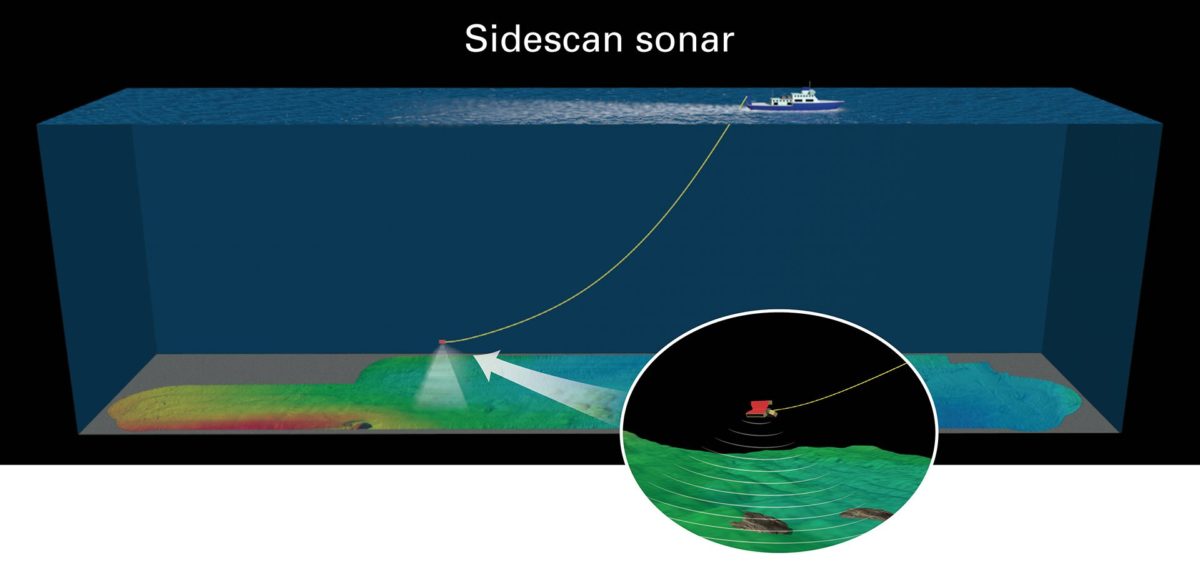Illustration showing how sidescan sonar works
Then it was time to get a closer look at the texture and physical character of the seafloor with a different form of sound imaging. I thought the best approach would be to use sidescan sonar, which is like taking an aerial photograph of the seaf loor, but instead of using light, you use sound to light up the seafloor, said Soule. They towed the sidescan sonar back and forth across the study area, keeping it at a height of about 500 meters (1,640 feet) above the bottom. As with the multibeam sonar, it emitted sound waves that ref lected back to receivers on the device. With sidescan sonar, the amplitude of the return waves reveals differences in the density, hardness, and roughness of the surfaces they bounced off. The amplitudes are mapped to the seafloor, producing an image much like an aerial photograph. Soft mud yields a nondescript gray image. Hard features such as crusts of calcium carbonate or clusters of shelled creatures produce brighter, lighter images. The images were transmitted up a cable towed by the ship, where the scientists kept their eyes glued to a screenand their fingers crossed. (Illustration by Jack Cook, © Woods Hole Oceanographic Institution)
Image and Visual Licensing
WHOI copyright digital assets (stills and video) contained on this website can be licensed for non-commercial use upon request and approval. Please contact WHOI Digital Assets at images@whoi.edu or (508) 289-2647.

